Text
Here's the full list of every animal currently in the Prehistoric Nature mod: https://docs.google.com/spreadsheets/d/1Da-ev8mIkL7B_iiRGC2Z6fVicAKKuJgmvC2VsQhJVpo/edit?usp=sharing
I feel like making a cute little zoo/aquarium exhibit. Pick one of these - any of them (Preferably something small that won't take forever to make an enclosure for) and let me know what you'd like to see from me!
There's a lot in this mod, so if you've got a favorite Paleozoic creature, it's almost certainly here.
27 notes
·
View notes
Text
Over 250 millions years ago, during the Permian period, the world was very different from today. While giant lycophyte scale trees and enormous horsetails, holdovers from the earlier Carboniferous period, decreased in dominance, seed-bearing trees began to take their place as the primary component of the forest canopy. Among these trees were the Glossopteridales, which dominated the cool temperate forests of southern Pangaea.
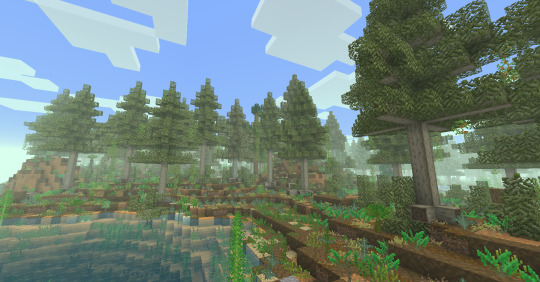
The most well-known among these plants (and the eponymous member of the group) is Glossopteris. Glossopteris, meaning “tongue fern,” is a form genus, and as such, technically only refers to the leaf of the plant. These leaves are characteristically elongated, widened towards the tip, and commonly described as “tongue-shaped.”
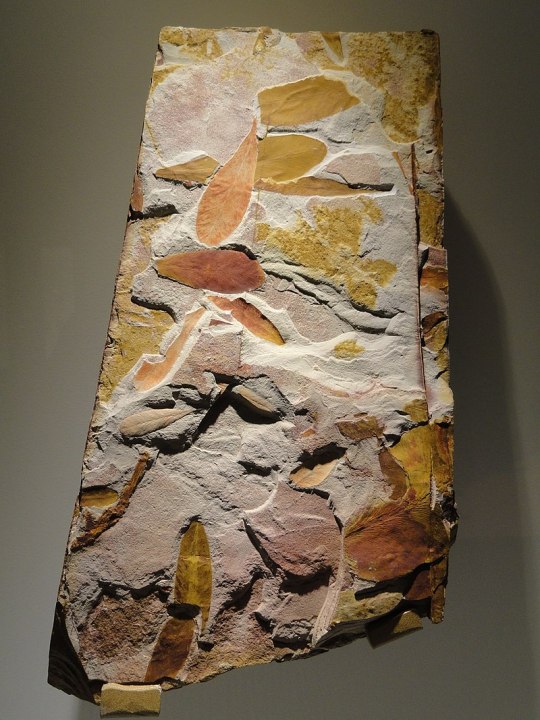
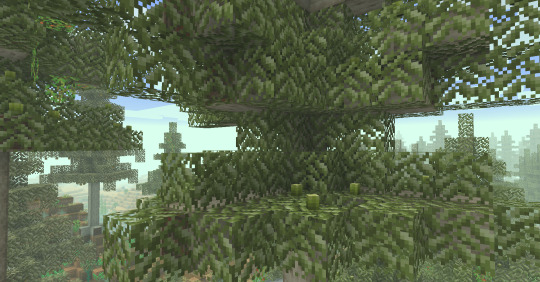
Today, fossils of Glossopteris have a rather disparate distribution, found in parts of what are now widely separated continents. However, during the Permian, these would have formed one contiguous range. The distribution of Glossopteris fossils is among the pieces of evidence that have been used to better understand the movement of continents over geologic time.
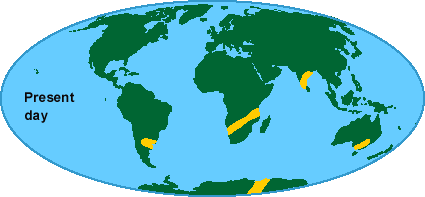

Glossopteris, along with the related Gangamopteris, are among the many prehistoric plants represented in the Prehistoric Nature mod, where they make up the Glossopteris Forest biomes. I have recently completed retexturing these plants for my Vanilladendron resource pack, which seeks to better integrate the look of Prehistoric Nature with vanilla Minecraft. To follow the progress of both projects, join us on Discord here: https://discord.gg/snzaYpu.

447 notes
·
View notes
Text
For my prehistoric life loving followers:
What do you view as the most important/influential/otherwise notable classical paleoart? I'm working on a series of pixel art paintings based on them and am trying to include some that aren't just Charles R. Knight.
So far, I've made one for Knight's "Leaping Laelaps"

I also have plans to do Knight's Agathaumas, Tyrannosaurus, and Henry De la Beche's "Duria Antiquior." I also may do "The Great Sea Dragons as They Lived," but I'm not sure how well it will work at low resolution.
Please let me know what you think and whether you have any additional suggestions for paintings!
97 notes
·
View notes
Text
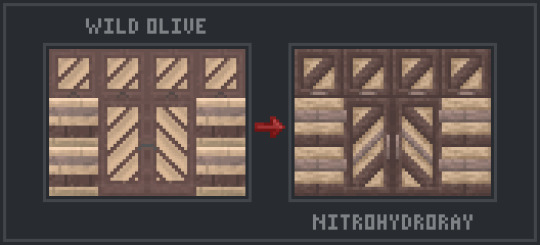
My retexture for "wild olive" wood, a generic tree representing the family Oleaceae, for the Prehistoric Nature mod.
It's kinda funny how much of my art has just been wooden doors.
72 notes
·
View notes
Text
I updated this exhibit to add a staff area!





Dunkleosteus Minecraft Aquarium
Request by @wjbminecraft

Dunkleosteus! A great choice, but also one of the largest animals currently in the mod. Thus, it took me quite some time to create an adequate exhibit. Now that it’s made, I’ll discuss it here, going over some palaeontology, aquarium science, and Minecraft build tips!
Dunkleosteus is an incredibly famous animal, best known for its immense armored skull - the only part of the body preserved in fossils. I would argue that aside from megalodon, it is easily the most famous extinct fish of all time. It lived in the Late Devonian, about 360 million years ago, and is easily the largest animal known from this time. It was an active pelagic predator, comparable to many sharks today.
Dunkleosteus belongs to a group of fish we call the Placoderms, a group united by the armored plates that cover their heads. Though the earliest placoderms were jawless, the lineage which led to Dunkleosteus developed jaws. Though the placoderms were once considered an extinct, primitive group of fish, we now know that they were ancestral to all jawed vertebrates. That means that you, yes you, are a living placoderm!
The armored head plates of the early placoderms developed with time into our modern skulls, but the degree to which this armor was internal vs external is hotly debated. Most depictions of Dunkleosteus restore it with a fully external skull, though this is unlikely. The Prehistoric Nature mod takes a very different route, depicting the armor as fully internal, completely covered by thick soft tissue such that it is indistinguishable from the rest of the body. Perhaps something in the middle is more likely, such as what is seen in armored catfish today. Additionally, the mod depicts Dunkleosteus with a shark-like body as opposed to the eel-like body it is often depicted with. This makes sense. The eel-like depiction is based on a preserved impression of the related genus Coccosteus, which is not ecologically similar to Dunkleosteus and is much smaller. It makes sense for an open-water predator like Dunkleosteus to be more shark-like in form.

Fig 1. The depiction in this mod may make Dunkleosteus difficult to recognize, until it opens its mouth.
In designing an enclosure for this immense fish, what should we consider? Well, for one, this is a large, open-water species, and likely a very active swimmer. In reality, this would likely make it impossible to house for long periods in captivity. For comparison, great white sharks have proved difficult to house in captivity, as their active motion results in injury as they swim into the edges of their tank. However, other sharks, including the even-bigger whale sharks, have been successfully exhibited. With some suspension of disbelief, we move forward. Firstly, a tank built to house Dunkleosteus would need to be immense. While the tank I have built is large, in real life, it would probably need to be even bigger than this. I also incorporated another common feature of tanks built to house active fish such as sharks: rounded corners. These decrease the chance of the fish running into edges of the tank. Together, these features came together to form the basis of the shape of the tank.
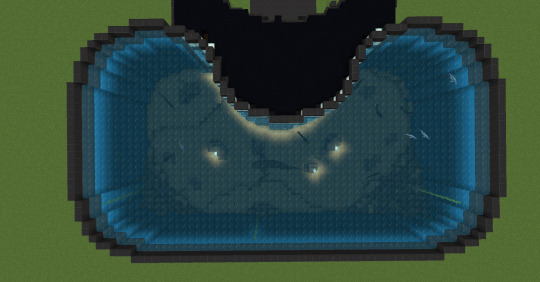
Fig 2. The tank from above. Note the curved edges.
The next important piece of this exhibit is the viewing area. Like many aquariums, I chose to make the room darkened, lit from the tank itself. However, because Minecraft has a rather simple lighting engine, this was done through the use of a dark color scheme for blocks rather than through lighting itself. In vanilla Minecraft, I often use concrete and terracotta alone for this purpose, but the mod also adds black sandstone which works beautifully in this setting. The viewing gallery itself is multileveled, allowing for the accommodation of a large number of people while reducing obstruction of the exhibit. Railings separate these levels, but are made of glass such that they do not obscure the view. I also provide some stadium-style seating for people that want to sit around and watch the animals.

Fig 3. The viewing gallery. Note how the use of black concrete in the ceiling gives it an almost abyssal look, allowing it to fade from perception.

Fig 4. View from the gallery. Glass railings do not obstruct the view.

Fig. 5. View of the gallery from the water.
I hope you enjoyed reading this! Feel free to request more animals to do exhibits/posts on!!
169 notes
·
View notes
Text
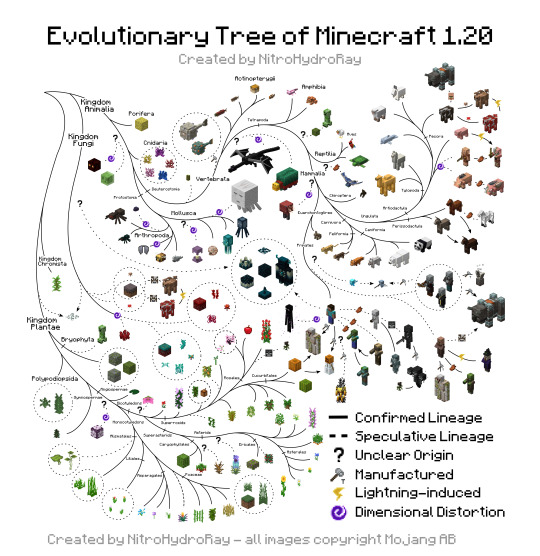
This is an updated version of a post I made several years ago, expanded to include all living things in Minecraft, not just the mobs.
Have any questions about why I placed something where I did? Please check out my explanatory post here before you ask about it:
Anything marked as “confirmed” is either a real evolutionary relationship as we currently understand them, or a relationship that is easily intuited. For example, goats and sheep are actually closely related, while spiders and cave spiders can be easily intuited to be related.
If the lines are solid, please check Google before you try to correct me - real life evolution is sometimes unintuitive! Yes, birds really are reptiles, pandas are carnivorans (which is not the same thing as a carnivore), dolphins are ungulates, and kelp isn’t a plant.
Yes, I know zombie horses exist. No, I didn’t include them because they don’t spawn naturally.
I’ll include the same disclaimer that I included in my last post: This tree is a mixture of actual biology and my personal headcanons, and so far as I know there is nothing objectively wrong with where I placed specific mobs, but there could be a lot subjectively wrong if you were to interpret the mobs differently than I did. In other words, the biology should be correct, but don’t take this as a statement of the actual canon within the game. I should also note that this tree makes the assumption that all life originated in the overworld, rather than evolving separately in each dimension. I also included non-mob blocks and items that would likely be considered animals, or evidence of animals existing.
1K notes
·
View notes
Text
Why are slimes placed as an early branch off of the kingdom Animalia?
Slimes are enigmatic. Taken at face value, they could fit anywhere or nowhere in the tree. They tick all of the boxes required to be defined as an animal, but don’t closely resemble any real phylum, though they do bear some resemblance to certain basal animal groups such as ctenophores and cnidarians.
Why is the elytra branching off from the insects?
The word elytra refers to the hard wings of beetles. This is where beetles would be placed on the tree.
Why is the shulker a mollusk?
It’s a shelled invertebrate - anything beyond this is unclear. It has a pair of shells like a bivalve, but could belong to any of a number of different related groups.
Why is the sea pickle so close to vertebrates?
The sea pickle is either based on a real life sea cucumber (an echinoderm), or a sea pickle (a tunicate). Either way, both of these groups are deuterostomes, which means they, like us, develop their anus before their mouth. Yeah.
Why are guardians labeled as manufactured?
It’s an idea I’m not totally sold on, but a theory nevertheless. It has been posited that guardians were created to guard underwater monuments and are not actually animals. I am of the opinion that if this is the case, they are still at least partially biological, as they do drop edible raw fish. In this case, they likely represent a lineage of jawless fish comparable to real life ostracoderms that was further modified for their role as temple guardians.
Why are the dragon and sniffer related? Why do they branch off the tree so early?
Both are 6 limbed, meaning they are not tetrapods, the group which includes all real terrestrial vertebrates. Instead, they may represent a different lineage of fishes which separately developed a third limb girdle and then followed a line of parallel evolution with the tetrapods. This is comparable to the various invasions of land by arthropods, in which arachnids, myriapods and insects separately evolved mechanisms of terrestrialization while also convergently evolving many of the same structures as each other.
Aren’t creepers described as “plant-like?” Why are they included with the vertebrates?
They have indeed often been described as plant-like by various developers. It is my belief that they are vertebrates with a symbiotic relationship with some form of plant, probably a moss. This is why they are also included in Bryophyta on the other side of the tree. All promotional merchandise that shows creeper internal anatomy shows the presence of bones and the general anatomy reflects a familiar yet distorted version of the common tetrapod body plan. They do not share much in common with either reptiles or mammals, and so I split them off early in the vertebrate portion of the tree. While creepers share a developmental history with pigs, they do not actually bear any synapomorphies to suggest this relationship is canon, and so I chose not to place them nearby.
Why are phantoms reptiles?
I’m honestly not sure what else they could be. The underside of the texture reminds me of the plastron of a turtle, though the wings are arguably more bat-like than anything else. Phantoms are all undead and their living version is likely now extinct, so we can’t fully understand the anatomy they would have had.
Why are striders synapsids? What is a synapsid?
Synapsids are mammals and their extinct, reptile-like ancestors. Striders have hair, like living mammals, but otherwise share very little with modern mammals, suggesting they split off early in synapsid evolution.
What is the warden/sculk?
I don’t know. It’s very purposefully the most alien life in Minecraft. Most realistically, I think it’s not from the overworld at all. However, that’s not really in the spirit of this project. Therefore, I hypothetically place it as a fungus, as fungi are capable of the sprawling growth in dark environments and possible parasitism in the case of the warden itself.
Why are blazes labeled as “manufactured?”
I haven’t got a clue what blazes could be. Are they sentient fire? Are they living creatures that mimic fire? Who knows. I finally ended up considering them to be something akin to vexes or golems - summoned by someone or something to guard nether fortresses, rather than naturally evolved creatures. This is actually supported by a really old (and likely since retconned) article from the Minecraft website. https://www.minecraft.net/en-us/article/visit-nether-
Why is glow lichen connected to two separate branches?
Because lichen is a symbiotic structure formed by both algae and fungi!
Why are chorus plants where they are?
They are angiosperms, meaning they bear flowers and fruit, but do not have the characteristics of either of the more derived major lineages of flowering plants.
Why are dripleaf plants alismatales?
To me, they bear a great resemblance to members of the arum family, such as elephant ear plants, arrowhead plants, and Monstera.
Torchflower?
It bears greatest resemblance to bromeliads, a group of plants related to grasses.
Why is the spore blossom placed where it is?
The spore blossom is another anomalous species. If “spore” is taken seriously, it must be a fern. However, ferns don’t have flowers, so I assumed the spores are actually just pollen. I placed it as a dicot based on the fact that dicots typically have flowers with 4-5 petals, while monocots have flowers with petals in multiples of 3.
Why aren’t vines and glow berry vines placed together?
The “vine” form has evolved dozens of times in separate lineages of plants, just like the “tree” form. It alone is not enough to indicate a close relationship. I tentatively placed vines where the grape family would go, and placed the glow berries where staff vines (Celastrus) should be.
Why aren’t dead bushes grouped with sweet berry bushes and azaleas?
Like vines and trees, “bush” is a description of a body form and not an evolutionary group. I depicted the dead bush as a real form of desert bush, a tumbleweed, specifically the Russian thistle, a common tumbleweed in the order Caryophyllales.
Sweet berries, on the other hand, are most likely based on lingonberries, a commonly grown crop in Sweden, where Mojang is based. These belong to the order Ericales along with azaleas, as well as many other common plants not yet represented in the game such as blueberries and cranberries.
Pitcher plants are real - why isn’t there a “confirmed” lineage on the tree?
Pitcher plants have evolved several times in different lineages, and there is no clear indication which ones the ones in Minecraft are. In fact, most likely, the Minecraft pitcher plants don’t belong to any real group of pitcher plants, as none of these produce “pods” nor do they have similar leaves. However, the most likely candidates are the family Nepenthaceae (order Caryophylalles) or the family Sarraceniaceae (order Ericales).
190 notes
·
View notes
Text

🥳
Fascinatingly, almost exactly a half year off from my actual birthday
46 notes
·
View notes
Note
Hi there! I love your Minecraft stuff; an enclosure from the Carboniferus would be awesome!
I've actually made several!
Including one which I can't seem to find any pictures of :(
But I'll probably do more in the future!
22 notes
·
View notes
Text
Triassic Freshwater Aquarium/Aviary
Inspired by the Baltimore Aquarium's Australia exhibit



Late Triassic / Triassic survivors -
Ceratodus: Lungfish; Triassic - Eocene
Chinlea: Mawsoniid coelacanth; Late Triassic
Lonchidion: Hybodontiform shark; Triassic - Cretaceous
Semionotus: Ray-finned fish related to modern gars; Late Triassic


Lakeland -
Beishanichthys: Ray-finned fish; Early Triassic
Henodus: Turtle-like placodont; Late Triassic
Vancleavea: Aquatic archisauriform; Late Triassic


Other freshwater animals -
Austrolimus: Freshwater horseshoe crab; Middle Triassic
Daedalichthys: Ray-finned fish; Early Triassic
Opolanka: Cyclid crustacean; Late Triassic
Saurichthys: Ray-finned fish; Whole Triassic
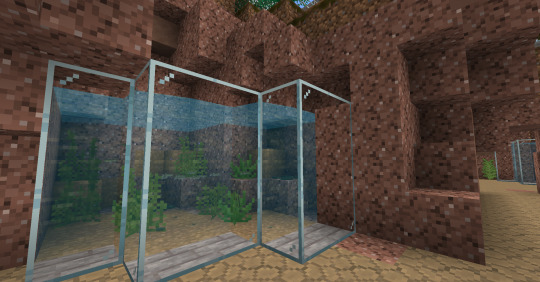
Maintenance access catwalks:
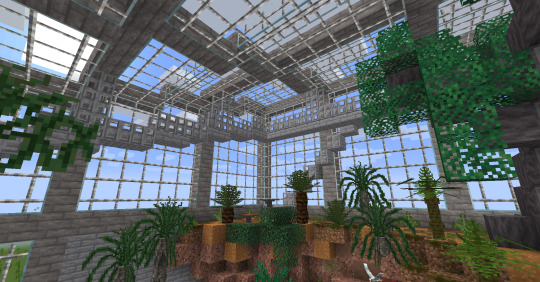
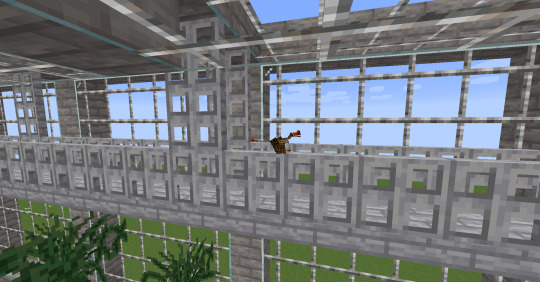
More shots of the aviary:
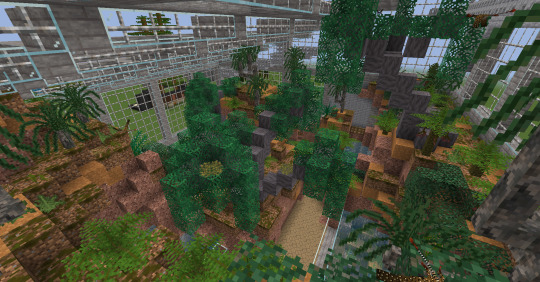
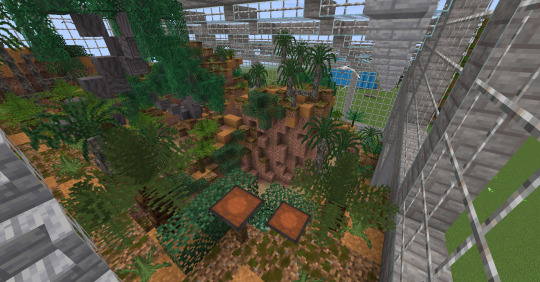

627 notes
·
View notes
Text
Striking the Balance
Considerations for designing vanilla-adjacent block models
or “A Case Study in Bivalves”
I’ve spent a number of years working on Minecraft textures and models for various projects, from small retextures to hand-crafted mobs. Lately, I’ve found particular interest in the design philosophy of vanilla Minecraft, specifically, how complex ideas are illustrated in simple models. In coming to understand this design philosophy, I have been able to learn how to better design “vanilla-like” models and additionally discovered where I am able to push these boundaries of design without creating a disjointed experience. As I have worked through retexturing and remodeling the Prehistoric Nature mod for my personal resource pack, Vanilladendron, I have had to make many design considerations along these lines, and I hope my thoughts are useful to those considering creating vanilla style resource packs or mods in the future.
The design history of Minecraft is long and messy. With the earliest developers being programmers but not artists, a purposeful design philosophy took time to develop and left numerous exceptions, from the inconsistent pixel sizes between entities of different scales to greatly varying levels of detail in blocks. Despite this, with time, two general thoughts would prevail. First of these is that Minecraft is not a voxel game, and second, that objects should be represented by the simplest possible model that can accurately communicate their identity. Failure to align with either of these two thoughts is the primary way that modded aesthetics clash with vanilla Minecraft. This is not necessarily a problem, and may in fact be a purposeful design choice, but anyone wishing to create an experience congruous with the core of Minecraft must keep them in mind.
Thought one: Minecraft is not a voxel game.
In understanding what Minecraft is, it is important to understand what it is not. So, what are voxels, anyway? In an artistic sense (no, we’re not gonna talk about the coding or rendering of voxels), voxels are essentially 3D pixels. Rather than just representing points on a flat grid, voxels have volume - they fill three dimensional space. So, knowing this, in what sense is Minecraft not composed of voxels? While Minecraft uses pixel art and 3D environments, pixels never represent stand-alone 3D voxels. Instead, textures are applied to flat surfaces on larger polygonally-defined objects. If, instead, Minecraft were a voxel-based game, you could expect to see objects such as flowers represented by 3D structures, with each pixel converted to a voxel, as has been done by many resource packs, such as the fittingly named “Default 3D”. For examples of voxel-based games, consider Cube World or Teardown. Both games show how voxels can be effectively used to create an aesthetic very unique from Minecraft, with varying degrees of blockiness. Note how objects and character designs from each game would be greatly incongruous with vanilla Minecraft, which does not use a voxel art style. In designing models for Minecraft, it is often tempting to stray towards a voxel aesthetic, as this can allow for clear shaping and detailing in 3D space, but if a vanilla-adjacent look is the goal, this should be thoroughly avoided.
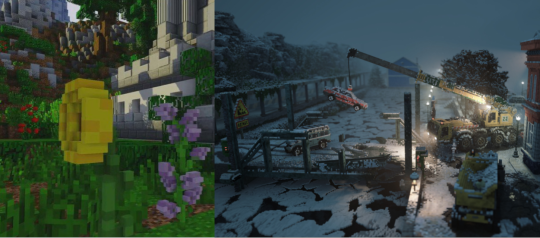
Default 3D resource pack displaying voxel-like models
Teardown, a game with a voxel-based art style
Thought two: Objects should be represented by the simplest possible model that can accurately communicate their identity
This thought ties closely to the prior, and discusses how objects are represented without being detailed 3D voxel structures. The vast majority of objects in Minecraft are blocks - cubes with six 16 x 16 faces. While this works well for many things, particularly pieces of terrain, there are many cases in which objects could not be communicated well by a meter cubed. In these cases, the simplest solutions are used. For example, rather than representing vines as a series of twisting voxels, they are a 16 x 16 texture on a single flat plane. Flowers and saplings - too complex for a single plane, are formed from only two faces, crossed. Of course, objects get more complex than that. Take for instance cauldrons, anvils, or hoppers. In these cases, the shape of the object is important in communicating the purpose of said object, and despite being more complex than most blocks, they are still relatively simple and do not stray into the territory of being mistaken for voxel art. It can be difficult to know how detailed to make a model. Even Mojang struggles with it. Sometimes they undershoot, creating a model that lacks necessary details, such as early versions of the campfire or archaeology pots. I am of the opinion that the redesigned campfires represent the most detailed block currently in Minecraft that still fits the vanilla aesthetic perfectly. Sometimes Mojang overshoots, such as with the dragon egg, which borders on voxel art, and which provides repeated frustration to the current Minecraft dev team. With this in mind, I view the dragon egg as the furthest extent of detail which can be accepted within “vanilla-like” models, and mods should truly go no further. You must figure out how to strike a balance between simplicity and complexity. If you are unsure how detailed to make your model, start with the least detail you can conceive and work up from there until you are happy with the aesthetic you have created.
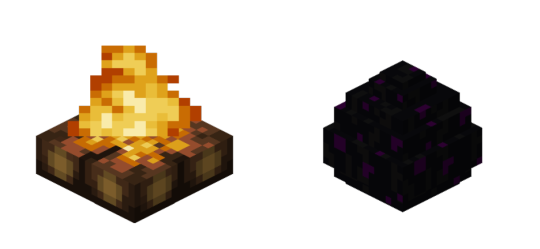
The original, under-detailed campfire block
The dragon egg, an overly detailed block
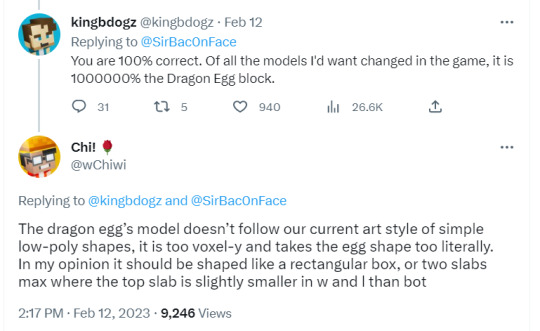
Opinions by the developers on the dragon egg
Philosophy in practice
Let’s apply these thoughts to a model from the Prehistoric Nature mod, specifically the “upright bivalve.” This is a model which has, to my mind, overshot the vanilla look in terms of detail. Specifically, it looks as though it is composed of voxels rather than larger, textured faces. Thus, it stands out greatly against vanilla blocks and other underwater decorations such as seagrass.
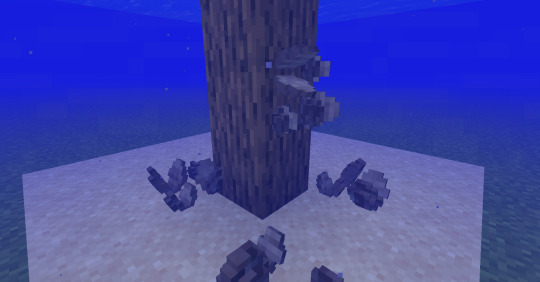
While I know where I would start in terms of reworking it, I would like this to act as a full guide, and so I will walk through my entire design process (which I usually do in my head) in the form of fully-fledged models, starting as discussed before with the simplest possible model, and then increasing complexity until we reach a design which I believe fits the vanilla feel of Minecraft and which I find personally pleasing.
Our first option is a flat plane, something similar to vines or glow lichen. It should be quickly obvious that this is not the correct choice. It’s hard to tell that these are even supposed to be shells, and certainly not “upright” ones at that.
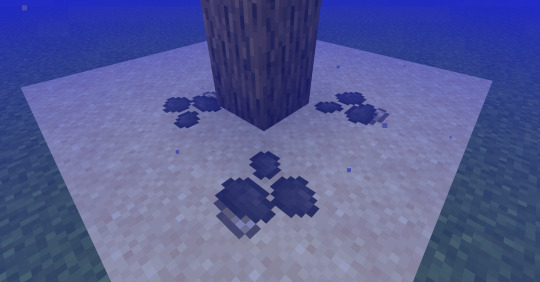
The next level of complexity would be that of a cross model, like saplings. I personally feel this one has some potential, and with a bit of texture tweaking, it could work. I suspect that if Mojang were to add this block, it would look something similar to this. However, I don’t feel it fits the aesthetic goals of myself or the original artist of the mod, so let’s continue to tweak it.

Perhaps we could mimic the shape of the original design, but use flat textures. While I feel this does better represent the shape I want than the previous option, it still appears too flat to be the oyster-like shells that I’m going for.

So we finally land at the version I like (in fact, the one I originally designed, the others being merely representations of my thought process). It is very similar to the design from the mod, just with the voxel shapes being simplified down into clear faces. This design is likely a bit more complicated than would be added to vanilla Minecraft these days, but doesn’t clash horribly with what is already in the game.
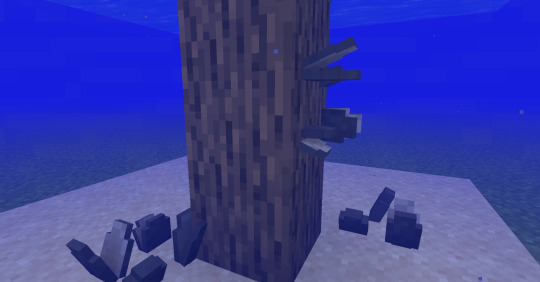
There we have it! A vanilla-inspired remodel that fits both the default appearance of the game while generally following the ideas introduced by the mod. Here it is featured alongside a variety of other remodels that I have done for my resource pack.

Thanks so much for reading! I hope this guide is useful to up-and-coming resource pack and mod makers!
196 notes
·
View notes
Text

My nereocystis kelp retexture. It originally looked like this and wasn't animated:

159 notes
·
View notes
Note
Oh hey. That's me!
TWO QUESTIONS. VERY IMPORTANT
do you play minecraft
if yes, what are your thoughts on archaeology being added to 1.20
I do not play minecraft, but I am aware of the impending archAeology update! I have a good friend who does many Cool Minecraft Things (tm) and we do intend to do something when the update comes out.
-Reid
82 notes
·
View notes
Text
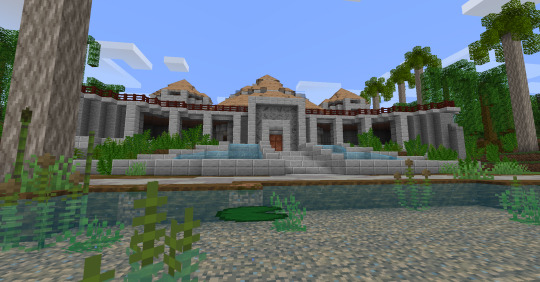


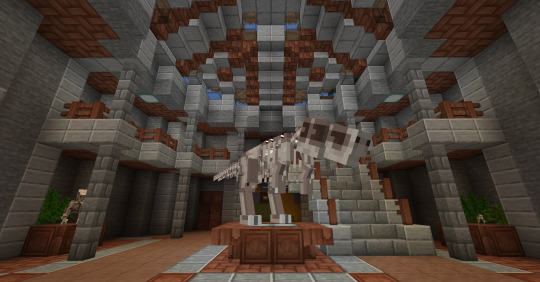
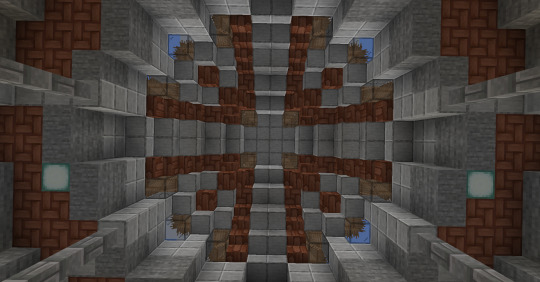
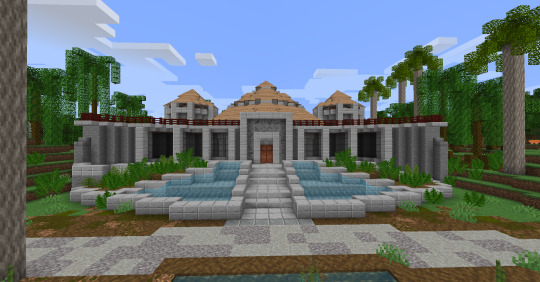


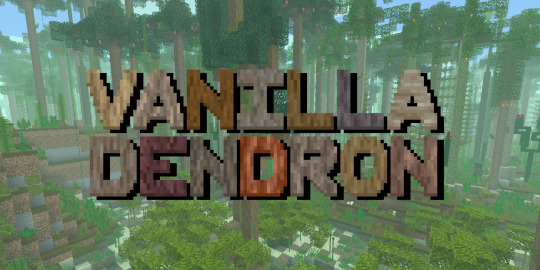
Jurassic Park visitor center made using my Vanilladendron resource pack (download here!) for the Prehistoric Nature mod, along with fossils from the Fossils and Archaeology mod.
257 notes
·
View notes
Text




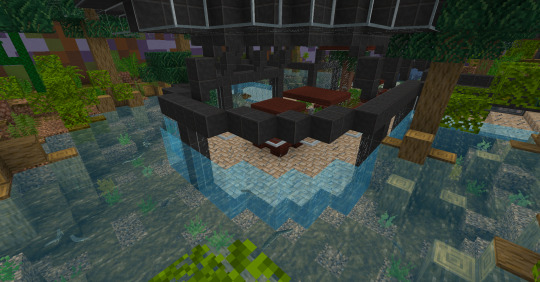
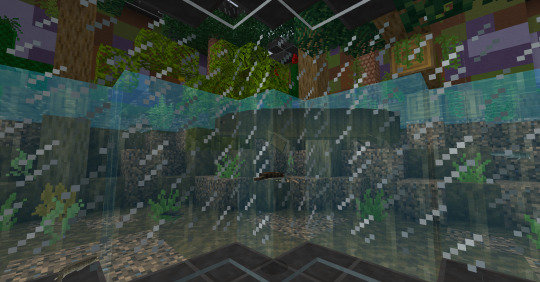



Carboniferous House inspired by the Shedd Aquarium's Amazon Rising exhibit
396 notes
·
View notes
Text
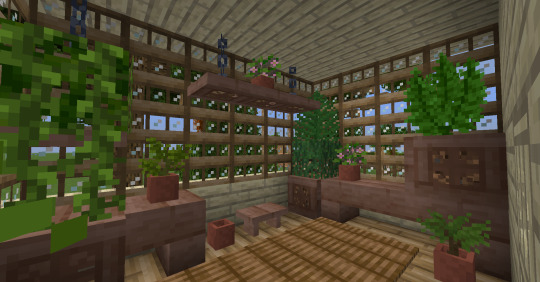
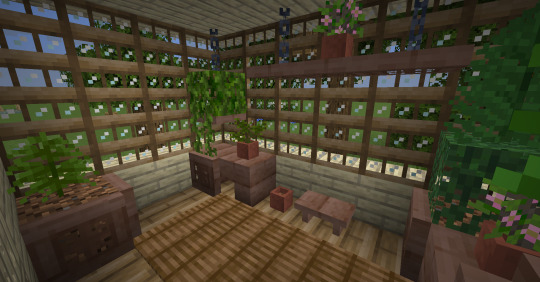
Cute little plant room with various blocks/textures that I made for my modded resource pack.
222 notes
·
View notes
Text
I finally got covid so I've spent the last three days just working on textures for the carboniferous plants in the Prehistoric Nature mod.
In general, my goal was to make the Carboniferous less visually noisy and I think I did a pretty good job. Let me know what you think!
Before:

After:

Believe it or not, there's no blocks changed between the two screenshots, just edited textures!
Before:
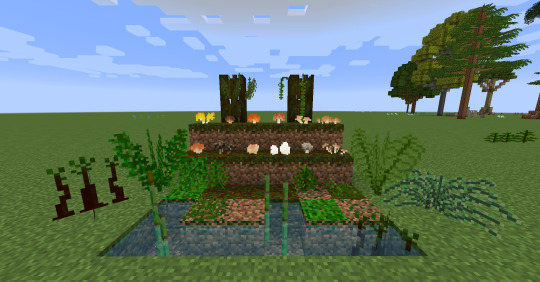
After:

170 notes
·
View notes